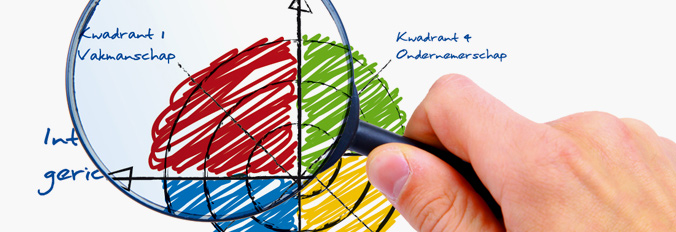Robert E. Quinn and Kim S. Cameron's culture typology
Only at the start of the 1980s did organisational scientists start paying serious attention to the concept of 'culture'. The fact that the culture of an organisation was so ignored as an important factor influencing the results of the organisation was due to the fact that it refers to values which are considered self-evident, to underlying assumptions, to expectations, collective memories and definitions which are already present within the organisation.
Obviously there are all sorts of levels of culture which influence the behaviour of people and organisations.
Robert E. Quinn and Kim S. Cameron identify four types of culture.
Clan culture
A very friendly working environment where people have a lot in common and which strongly resembles a large family. The leaders, or the heads of the organisations, are viewed as mentors and maybe even as father figures. The organisation is held together by loyalty and tradition. There is a high level of engagement. Within the organisation the emphasis is on the long-term benefits of human resource development, and great value is attached to personal relationships and morale. Success is defined in the context of openness to the needs of the customer and care for the people. The organisation attaches great value to teamwork, participation and consensus.
Hierarchy culture
A highly formalised, structured working environment. Procedures determine what the people do. The leaders are proud of the fact that they are good, efficiency-oriented coordinators and organisers. Maintaining a smoothly running organisation is the most crucial thing. Formal rules and policy documents hold the organisation together. Concern for the long term focuses on stability and results, accompanied by an efficient and smooth execution of tasks. Success is defined in the context of reliable delivery, smooth planning and low costs. Personnel management must ensure certainty about the job and predictability.
Market culture
A result-oriented organisation in which the greatest care focuses on completing the work. The people are competitive and goal-focused.
The leaders are drivers, producers and competitors at the same time. They are tough and demanding. The binding agent that keeps the organisation together is the emphasis on winning. Reputation and success are important areas of focus.
For the long term people focus on competitive activities and achieving measurable targets and goals.
Success is defined in the context of market share and market penetration. Competitive pricing and market leadership are important.
The organisational style is one of unflinching competition.
Adhocracy culture
A dynamic, entrepreneurial and creative working environment. People stick their neck out and take risks.
The leaders are viewed as innovators and risk takers. The binding agent that keeps the organisation together is a commitment to experimentation and innovations. The emphasis is on trendsetting.
For the long term the organisation's emphasis is on growth and tapping new sources.
Success means having new products or services available; being a pioneer in this is considered important. The organisation encourages individual initiative and freedom.
Illustration of culture types
The relationships between the four models are shown in two dimensions in Robert Quinn's framework. On the vertical axis 'flexibility' is set against 'controlling'. On the horizontal axis 'internal orientation' is set against 'external orientation'.

Scans
The members of the Quinn Association have access to the ‘Organizational Culture Assessment Instrument' (OCAI) with which you can identify the current and desired culture of your organisation via the Internet.
More information
- Click here to pose your question
- Previous page





